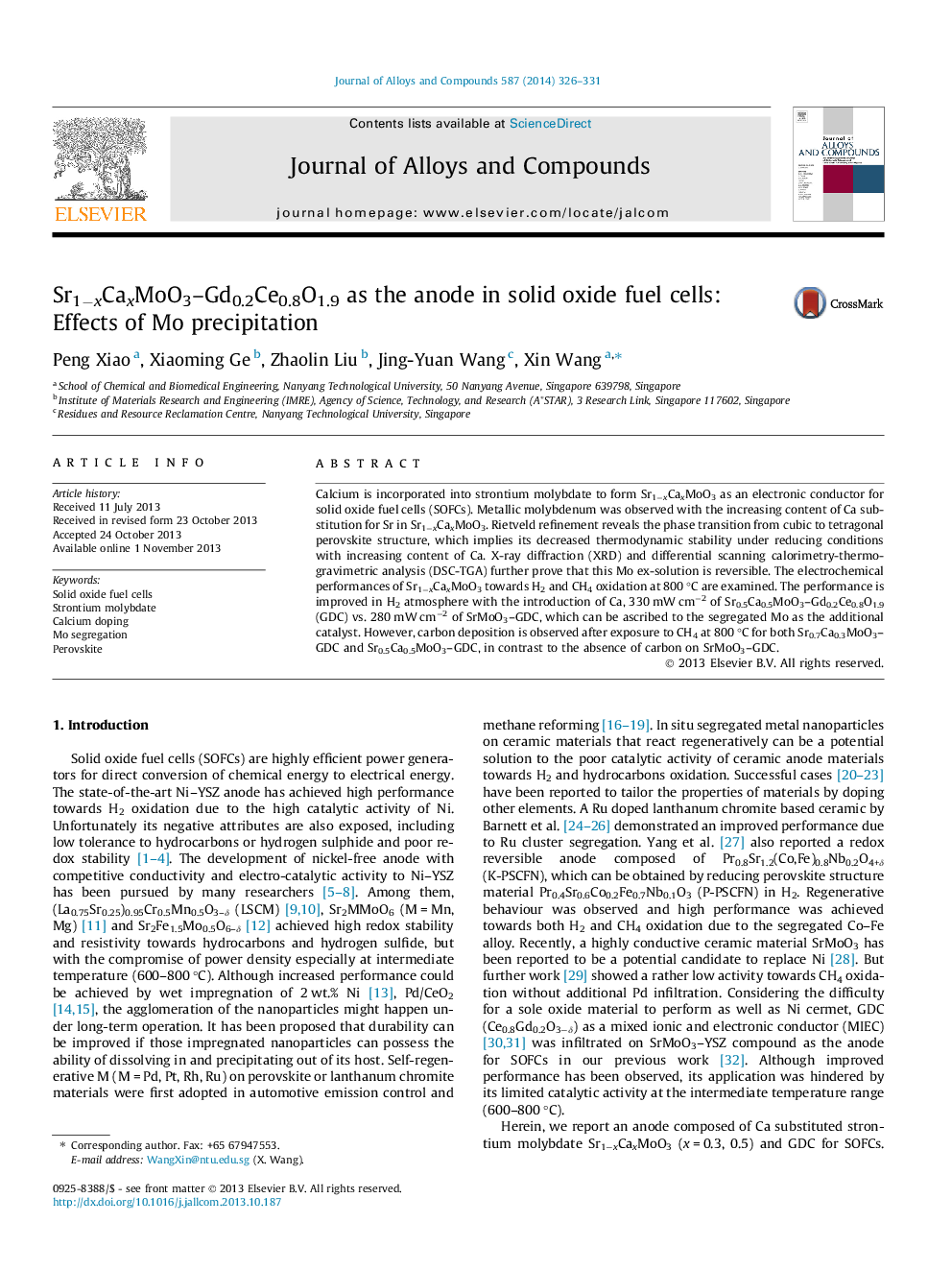| Article ID | Journal | Published Year | Pages | File Type |
|---|---|---|---|---|
| 1612310 | Journal of Alloys and Compounds | 2014 | 6 Pages |
•The effect of calcium incorporation in strontium molybdate is investigated.•Metallic molybdenum ex-solution is observed under SOFCs’ operating condition.•Molybdenum ex-solution is demonstrated to be reversible.•Molybdenum ex-solution enhances the electrochemical performance.
Calcium is incorporated into strontium molybdate to form Sr1−xCaxMoO3 as an electronic conductor for solid oxide fuel cells (SOFCs). Metallic molybdenum was observed with the increasing content of Ca substitution for Sr in Sr1−xCaxMoO3. Rietveld refinement reveals the phase transition from cubic to tetragonal perovskite structure, which implies its decreased thermodynamic stability under reducing conditions with increasing content of Ca. X-ray diffraction (XRD) and differential scanning calorimetry-thermo-gravimetric analysis (DSC-TGA) further prove that this Mo ex-solution is reversible. The electrochemical performances of Sr1−xCaxMoO3 towards H2 and CH4 oxidation at 800 °C are examined. The performance is improved in H2 atmosphere with the introduction of Ca, 330 mW cm−2 of Sr0.5Ca0.5MoO3–Gd0.2Ce0.8O1.9 (GDC) vs. 280 mW cm−2 of SrMoO3–GDC, which can be ascribed to the segregated Mo as the additional catalyst. However, carbon deposition is observed after exposure to CH4 at 800 °C for both Sr0.7Ca0.3MoO3–GDC and Sr0.5Ca0.5MoO3–GDC, in contrast to the absence of carbon on SrMoO3–GDC.
